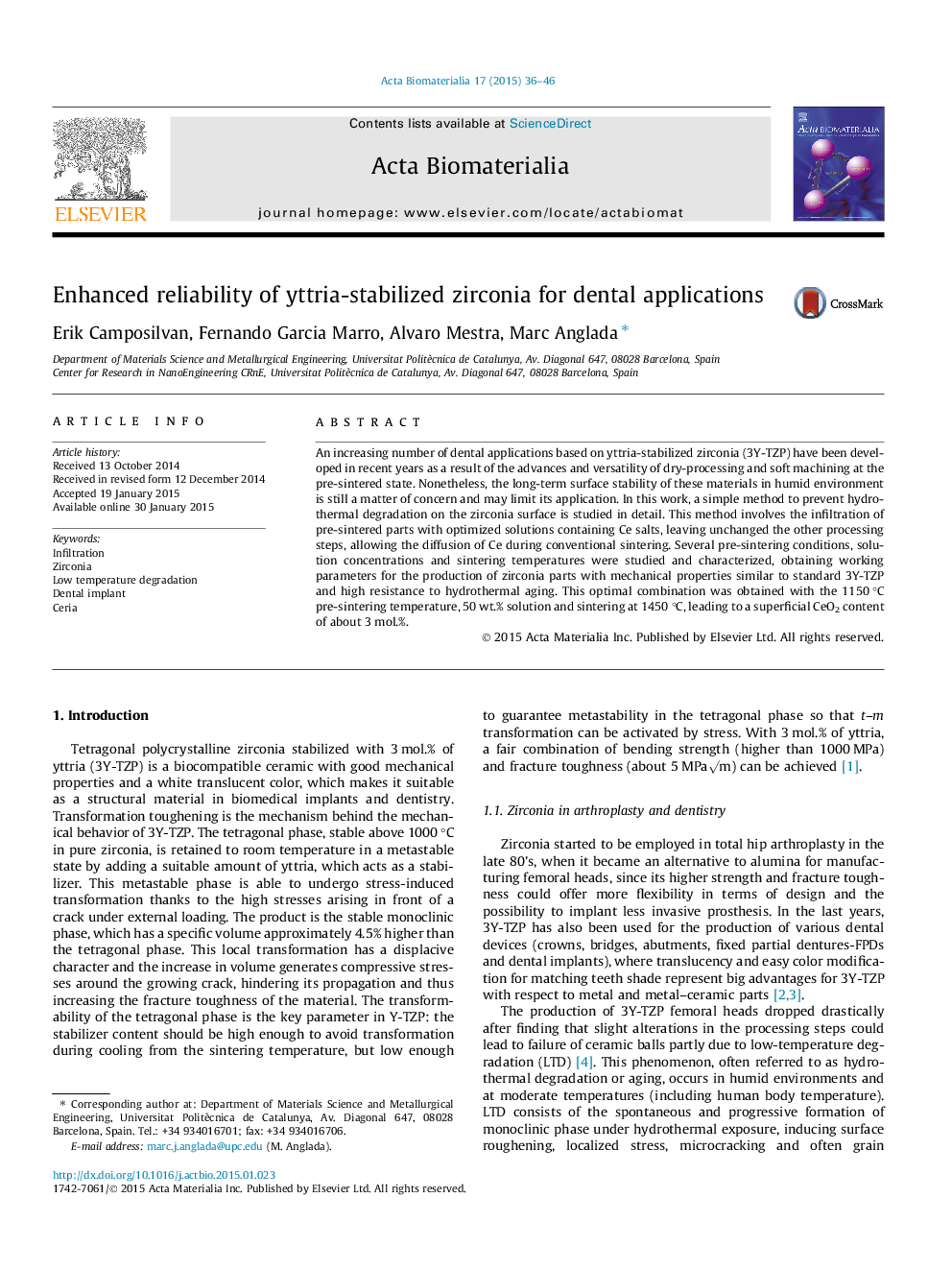| Article ID | Journal | Published Year | Pages | File Type |
|---|---|---|---|---|
| 314 | Acta Biomaterialia | 2015 | 11 Pages |
An increasing number of dental applications based on yttria-stabilized zirconia (3Y-TZP) have been developed in recent years as a result of the advances and versatility of dry-processing and soft machining at the pre-sintered state. Nonetheless, the long-term surface stability of these materials in humid environment is still a matter of concern and may limit its application. In this work, a simple method to prevent hydrothermal degradation on the zirconia surface is studied in detail. This method involves the infiltration of pre-sintered parts with optimized solutions containing Ce salts, leaving unchanged the other processing steps, allowing the diffusion of Ce during conventional sintering. Several pre-sintering conditions, solution concentrations and sintering temperatures were studied and characterized, obtaining working parameters for the production of zirconia parts with mechanical properties similar to standard 3Y-TZP and high resistance to hydrothermal aging. This optimal combination was obtained with the 1150 °C pre-sintering temperature, 50 wt.% solution and sintering at 1450 °C, leading to a superficial CeO2 content of about 3 mol.%.
Graphical abstractFigure optionsDownload full-size imageDownload high-quality image (112 K)Download as PowerPoint slide
